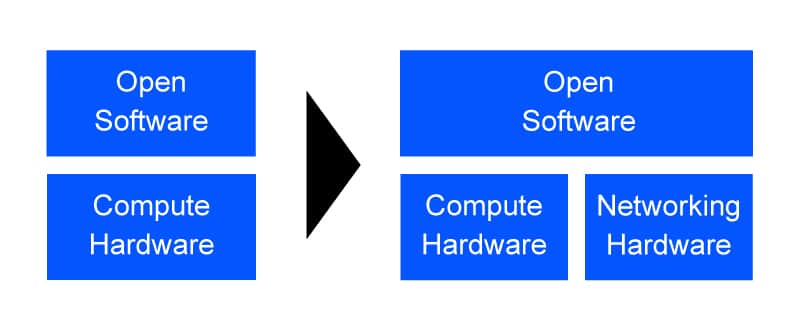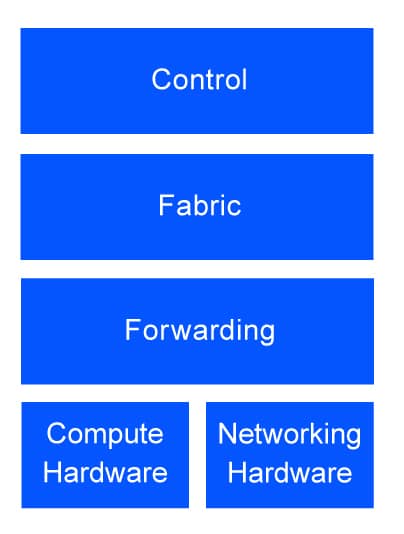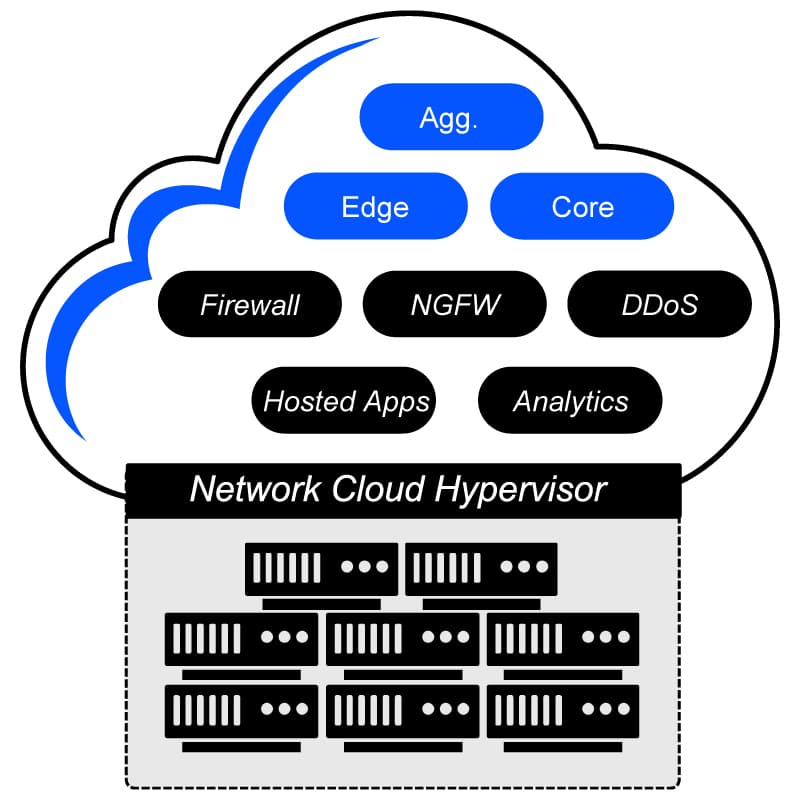Well, now is a good time to revisit these terms and understand, once and for all, what we mean by “disaggregation” and “network disaggregation.”
What is disaggregation?
Disaggregation, when used in the context of technology, is a method (or an architecture) for moving away from a once-monolithic function, in which hardware and software are heavily combined and provided by the same vendor. The disaggregated method/architecture is one in which commercial off-the-shelf (COTS) hardware is used to run various software instances.

The main benefit of disaggregation is that you no longer are bonded to a specific/single hardware vendor. You can leverage the fast development, economy of scale, and variety of suppliers of commercial off-the-shelf hardware.
What is network disaggregation?
Network disaggregation, or network function disaggregation, is based on the same principle of unlinking, or disaggregating, solution elements that were once coupled in a monolithic architecture. Here, the use of generic hardware (often referred to as COTS or merchant silicon-based hardware) is a very common practice.
Having said that, for traffic-intensive network functions (e.g., data-plane or use-plane functions), the use of CPU-based COTS hardware (e.g., servers) has proven to be not sufficiently scalable and cost-effective. This led to the introduction of white boxes, which incorporate networking-optimized yet generic/COTS ASICs.

On top of this hardware-software separation, additional levels of separation, or disaggregation, are used. Each additional disaggregation level adds a layer of flexibility, vendor variety, supply chain robustness and cost-saving/efficiency.
Additional levels of disaggregation usually derive from breaking a network function into multiple components. An example is breaking the cellular base station into a central unit (CU), distributed unit (DU) and radio unit (RU). In the IP networking world, such multi-level disaggregation includes the separation of the control plane and the user plane, and the separation of the packet-forwarding functionality and the fabric functionality.

What are the benefits of network disaggregation?
Network disaggregation delivers the benefits of both the chassis model and the CLOS model, by using cloud technologies and white box hardware to create ultra-reliable and wildly scalable networks.
Vendor choice
Vendor lock-in has historically been a significant problem for network operators. For example, in the chassis model, a network operator is locked into a specific networking vendor that provides the hardware and software. Network disaggregation offers network operators the choice of best-of-breed solutions, as vendors for hardware and software are certainly different among a growing vendor marketplace. Instead of having over-reliance on a single vendor, network operators can choose from a wide range of alternatives that may be readily integrated through open interfaces.
Advanced technologies
Traditional networking has long relied on the chassis-centric approach. Now, network disaggregation can blend the time-tested chassis model with the benefits of cloud computing. New technologies can be readily adopted as needed based on operator, and not vendor, priorities. By opening up the architecture, disaggregated networks can readily enable new technologies, and lend themselves to rapid adoption of new technology innovations.
Pace of innovation
Network disaggregation can improve the adaptability of your business, allowing it to remain innovative. With network disaggregation, you can select the hardware from one vendor and software from another, each focusing on their own domain. This drives a healthy sense of competition and accelerates the pace of innovation as opposed to the existing integrated chassis solutions, where hardware and software must be developed together by a single, traditional vendor.
Business continuity
Network disaggregation optimizes performance and operational consistency and improves control. Network operators can readily swap not only components but vendors, mitigating exposure to disruptions in the supply chain. Network disaggregation combines the scale-out model with vertical disaggregation by using merchant-silicon-based white boxes and Network Operating System (NOS) software from separate vendors. By offering service provider supply chain flexibility, the vertical disaggregation of network disaggregation can potentially offer more innovation because it provides a broader vendor ecosystem on top of the architectural benefits of the horizontal disaggregation approach.
Simplify operations
Using economies of scale, network disaggregation offers lower operational and capital costs. Disaggregated network architectures can scale in a standardized and, more importantly, predictive way. The disaggregated networking model usually includes a built-in orchestrator that automates day zero and day one operations, and orchestrates system capabilities, helping operational scale. This removes the operational overhead of managing multiple refresh cycles for line cards or system forklifting.
Access to an open ecosystem
Incumbent vendors have made inherent barriers for network operators. With network disaggregation, network operators may exploit inclusive and open ecosystems. Governed by a broad community vs. the long-standing approach of being controlled by a single incumbent vendor, network disaggregation encourages a vibrant open ecosystem that places the operator in the center.
Disaggregation – what’s next?
As mentioned, disaggregation is not a new concept. It also is not limited to the networking domain. In order to leverage its benefit to the full extent, disaggregation should be used as a basis for a wider architectural change – the move to cloud-native architecture. This will include, on top of multiple levels of disaggregation, also hardware distribution and software containerization. But this is a topic for another post…

DriveNets White Paper
Introducing Network Cloud




